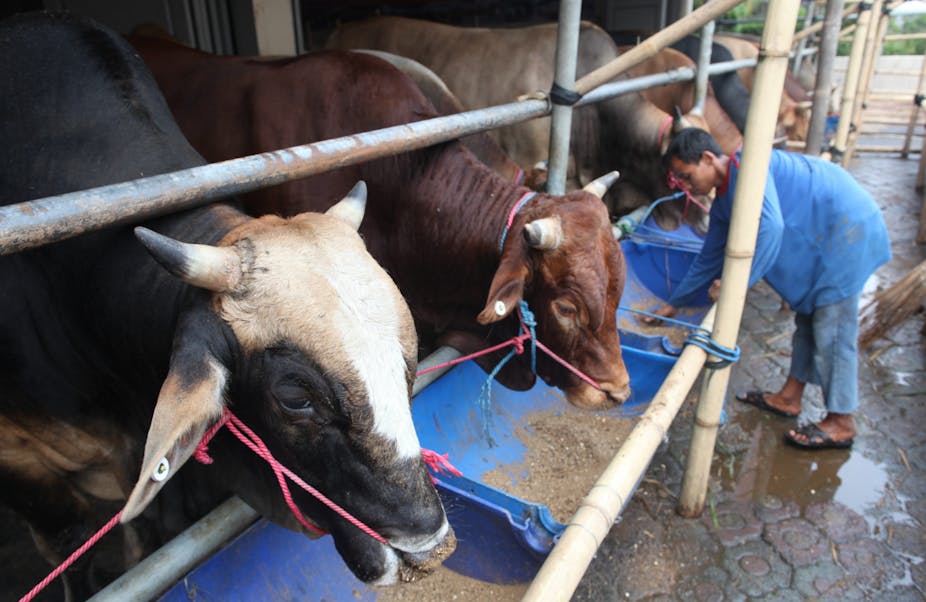Indonesia’s decision to slash the import quota for Australian beef cattle to 50,000 for the third quarter has little to do with the tense relationship between the two countries.
Anticipating high demand for beef for Ramadan and the Eid festival in June and July, Indonesia stocked up by increasing the import quota from Australia in the second quarter. As a result, Indonesia’s Agriculture Ministry is confident that supply for beef is assured for up to five days after Eid, when demand for beef will decrease again.
Beef self-sufficiency
Restrictions on imports by means of quotas are part of the Indonesian government’s policy to reach self-sufficiency in beef production. Indonesia has long wanted to to be self-sufficient for beef but has repeatedly missed its targets in 2010 and in 2014.
Agriculture Minister Amran Sulaiman said in March this year that Indonesia might no longer import beef cattle in a year or two.
According to the Indonesian government, the goal of being self-sufficient will be met when local farmers are able to meet 90% of national beef consumption. Indonesia’s cattle farmers currently supply nearly 80% of beef consumed in Indonesia.
The government feels the need to be self-sufficient because of a growing national demand for beef. Between 1999 and 2010 beef consumption increased by 4.66% per year. Meanwhile, domestic production rose by only 3.2% per year. Indonesia’s beef imports increased by 21.58% annually to meet national demand.
Australia has been the main supplier of imported beef cattle, but Indonesia regards being dependent on imports as risky. Prices of beef can surge uncontrollably whenever the rupiah is weak against the Australian dollar or when import tariffs rise.
Besides import quotas, the Indonesian government provides production subsidies for cattle farmers. The government also helps farmers use technology in breeding cattle using artificial insemination.
In 2011, more than 90% of cattle farmers in Indonesia, or around 5.7 million of them, were traditional small-scale farmers, with an average of three cows per farm. Indonesia had only 234 large-scale farms, with an average of 734 cows per farm.
Recent technological improvements must have achieved some success in increasing domestic production. Indonesian Trade Minister Rahmat Gobel, responding to questions about import quota cuts, said cattle farmers in West Nusa Tenggara have unsold livestock while Indonesia imports cattle from Australia.
Diversification of cattle imports
Indonesia is also thinking about diversifying its sources of cattle imports. Indonesia allows cattle imports only from countries that are certified free from mouth and foot disease. This bars cattle from countries such as India from entering its market.
However, Indonesia imports sausages from Malaysian producers that use beef from India. Local processed meat producers in Indonesia have been lobbying the government to allow cheaper imports from India to enter Indonesia.
Political tension between Indonesia and Australia does not factor in Indonesia’s decision to cut the cattle import quota. It is based on national interest in achieving food security and finding importers that give the best price.
As Indonesia aims for self-sufficiency in beef and looks to diversify its sources of imports, Australia should prepare for a decline in cattle exports to Indonesia in the coming years.

